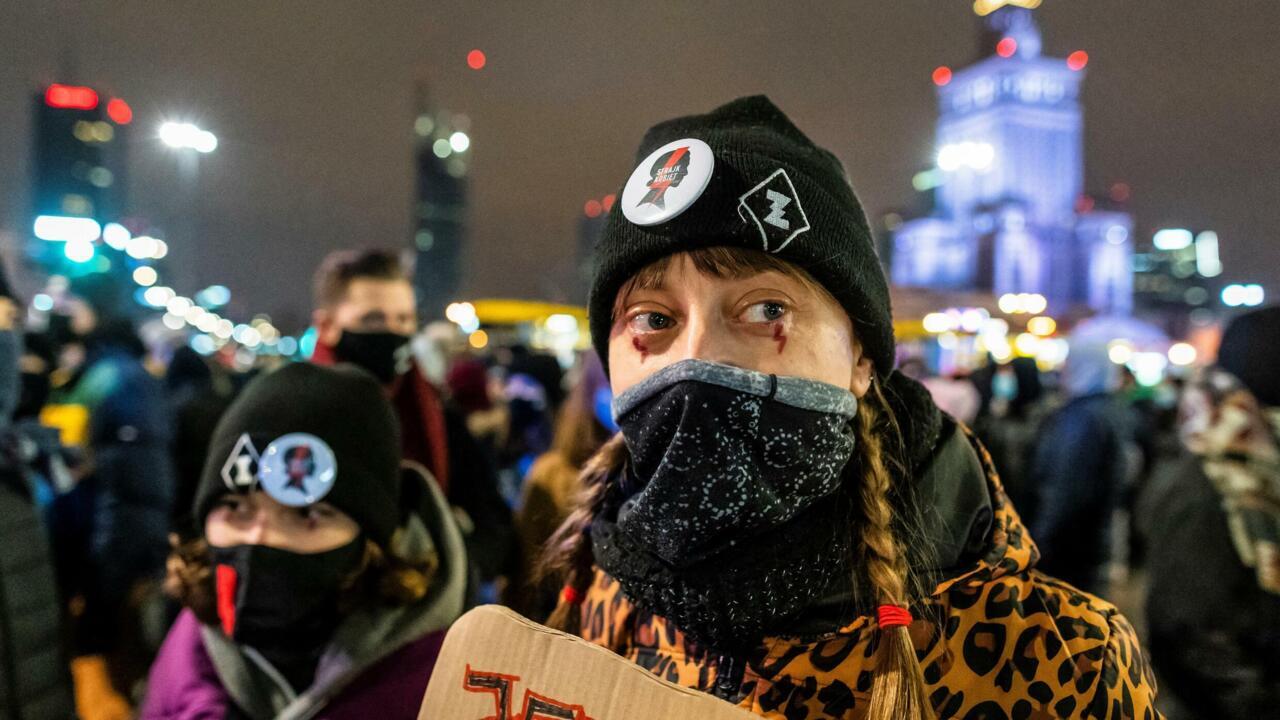
Demonstrators block the street as they take part in pro-choice demonstration in the center of Warsaw on January 29, 2021, on 100th day of protests since October 22, 2020 against Poland's near-total ban on abortion. - Thousands protested for a third consecutive night in Warsaw and other parts of Poland after the country's right-wing government implemented a court ruling imposing a near-total ban on abortion. (Photo by Wojtek RADWANSKI / AFP)
NGOCSTIP – EU–UN Step Up Fight Against Trafficking with renewed urgency in 2025 as global human trafficking networks grow increasingly complex. On 18 June, a key meeting was held between the European Union’s Anti-Trafficking Coordinator Diane Schmitt and representatives from the United Nations Inter-Agency Coordination Group against Trafficking in Persons, also known as ICAT. The primary goal of this meeting was to evaluate global trafficking trends and strategize more effective, cross-border responses. The rise in human trafficking cases from Latin America became a central point of concern. Both organizations emphasized the need to refine the implementation of the revised EU Anti-Trafficking Directive. This directive has been designed to align with the EU Pact on Migration and Asylum. Together, the EU and UN agreed that stronger multilateral partnerships and joint task forces must be developed to stop organized trafficking operations and protect vulnerable populations at every stage of migration and exploitation.
To advance the EU–UN Step Up Fight Against Trafficking, both bodies agreed on enhancing legal cooperation and harmonizing their policy frameworks. The revised EU Anti-Trafficking Directive is expected to play a pivotal role in standardizing national efforts within the bloc. This updated directive reflects a broader strategic shift toward preventative action and coordinated prosecution efforts. The United Nations expressed its support for this direction and offered technical guidance to align the directive with international human rights standards.
Trafficking routes evolve quickly, so lawmakers update regulations in real time to stay effective. Meanwhile, authorities focus on prosecuting traffickers and supporting survivors through legal aid and protection services. In addition, governments also build long-term integration programs that help survivors rebuild their lives. A joint legal framework furthermore closes jurisdictional gaps and targets weaknesses traffickers often exploit. Consequently, EU states streamline investigations and improve data sharing to boost cooperation with UN agencies. Moreover, legal teams coordinate across borders to dismantle organized trafficking operations. Notably, leaders push reforms that align national laws with international human rights standards. Therefore, the approach prioritizes justice for victims and pressure on trafficking networks. Ultimately, these efforts signal a more unified front against global trafficking. Simultaneously, ongoing evaluations ensure that every strategy remains adaptable to shifting criminal tactics.
“Read about: Protecting Teens: Online Workshop on Sex Trafficking Awareness for Parents”
The EU–UN Step Up Fight Against Trafficking targets new trafficking routes from Latin America. Reports show traffickers move more victims across continents using fake jobs and exploitative recruitment. The EU and UN identify high-risk corridors where trafficking activities have grown rapidly. They focus on maritime routes and land crossings often used by organized trafficking groups. Authorities gather data to map common patterns in victim movement and recruiter behavior. Teams investigate how traffickers exploit gaps in border and immigration systems. Officials alert local agencies in Latin America about trends affecting their regions. Collaborative actions aim to block these routes and rescue potential victims early.
More resources will support transit countries that struggle with border control and victim assistance. The initiative strengthens protection for individuals rescued or intercepted along trafficking routes. Mobile response teams and emergency shelters provide immediate care and safety. Authorities will offer fast-tracked asylum and residency options to help stabilize rescued individuals. Awareness campaigns will educate vulnerable communities in both origin and destination regions. Local officials, NGOs, and law enforcement will receive specialized training to handle trafficking cases. The EU and UN will coordinate these programs to ensure unified international action. Collaborative strategies will prioritize prevention, rescue, and rehabilitation across multiple regions.
A major pillar of the EU–UN Step Up Fight Against Trafficking campaign involves building multi-agency coordination across borders. During the recent meeting, participants stressed that fragmented action remains one of the biggest barriers to progress. Agencies often work in silos, which traffickers exploit by shifting operations across jurisdictions with weaker enforcement.
The EU and UN form cross-border task forces combining immigration, cybersecurity, social, and financial crime experts. These task forces build early warning systems to detect and prevent human trafficking across regions. They expand a shared digital database to monitor recruitment, travel, and victim movement patterns. Officials provide joint training for agencies to recognize trafficking signs during inspections. Teams also track suspicious online job advertisements used by traffickers. They monitor cryptocurrency transactions to follow money movement linked to trafficking networks. Authorities update tools regularly to keep pace with evolving digital threats. Experts analyze data trends and share findings to improve prevention efforts.
“Read more: Life-Saving Drug for Newborns: Swissmedic Approves Coartem Baby”
While technical collaboration forms the foundation, the EU–UN Step Up Fight Against Trafficking movement also focuses on driving political will and ensuring accountability among participating states. The meeting concluded with a call to action for national governments to commit not only resources but also public support toward the fight against human trafficking. Campaigns will be launched to educate citizens about trafficking risks, survivor rights, and reporting mechanisms.
The EU monitors member state compliance with anti-trafficking directives and may apply sanctions or corrective measures for violations. The UN publishes regular progress reports that track implementation benchmarks across regions. These reports name best practices and identify gaps to maintain momentum and encourage transparent governance. Local authorities invest in anti-trafficking units and partner with civil society organizations. Diplomatic channels support cooperation between source and destination countries to uphold international responsibilities and protect human dignity.